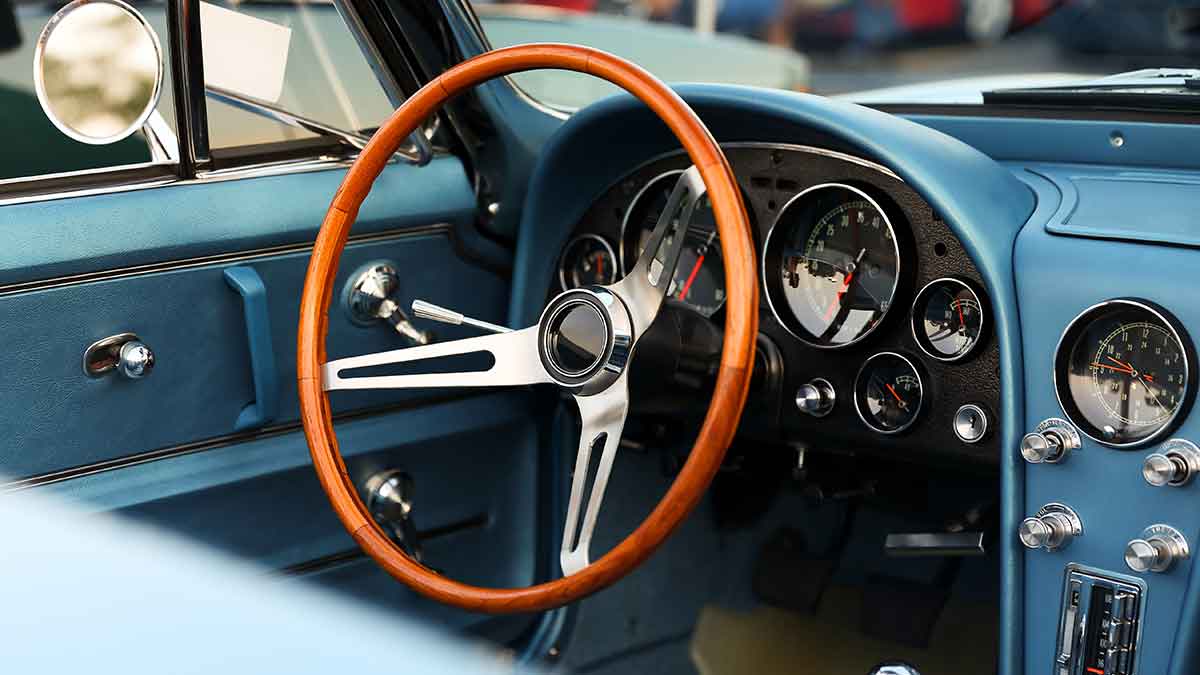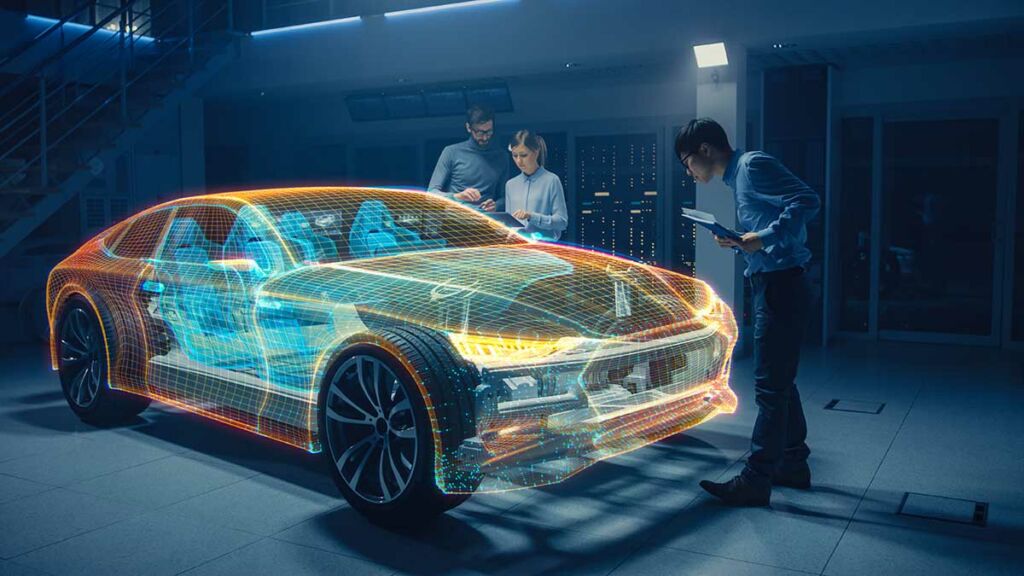Design has always played an integral role in the automotive industry; sometimes as an artistic endeavor, sometimes as a functional consideration, and sometimes as a happy medium between both. In this article we dive into the history of automotive design to see how the discipline has evolved and what changes we can expect from the future.
The early days of car design
In the early days of the automotive industry, the line between art and design had not been clearly drawn. The first vehicles were a step up from horse-drawn carriages, and design considerations were the prerogative of coach builders. These artisans specialized in handmade wood and metal work, and applied the skills they had learnt in carriage making to create unique statements of craftsmanship targeted at wealthy consumers.
During those days, the automotive manufacturing process was fragmented into two separate aspects. It was common for luxury car makers to develop the frame, engine, suspension, and all functional or technical aspects. However, aesthetic aspects like body work were done by coachbuilders, such as i.e. Mulliner or Park Ward on a Rolls-Royce chassis, who produced vehicles of a highly artistic value, almost one-of-a-kind sculptures.
Ford’s Model T: A new paradigm
This changed with the development of Ford’s model T. The model T marked the change to a form that was driven by production needs which resulted in a form follows function approach, in this case the function of mass producibility.
From that point on, the intention behind automotive production was creating a contemporary shape statement, as well as the strategy needed to serialize processes so they could be easily replicated.
This marked the start of a completely different approach, where the technical aspects of production took center stage. The aesthetics of design were still present, but more as the result of the possibilities and within the limits of production methods and afforded by existing materials.
Advances in materials and techniques led to another shift in automotive design. During the 1970s, steel quality improvements resulted in higher safety standards, but this didn’t give free rein to designers. The trade-off was: more stiffness for less deep tooling shapes – hence the rise of more angular flat shapes. Car ownership was on the rise, but the oil crisis curbed demand and manufacturers had to rethink car production.
The automotive design industry was faced with the choice between creating a pricey one-of-a-kind vehicle or affordable mass produced units, and they went for the latter. The creation of the VW Golf marked a turning point in automotive design. The model, which was touted as “uncompromisingly practicalâ€, embodied an approach that would become increasingly complex, as automotive firms were expected to balance aesthetically satisfying intent, market forces, performance, functionality, and compliance with legislation.
New materials and new tooling methods
The following big leap in automotive design took place in the mid to late 1980s. During this era, tooling methods and capabilities became more sophisticated, and so did key materials like plastics. Thanks to these developments, it was possible to experiment with free-form shapes and to step away from the limitations of faceted feel. New rendering techniques appeared and gave designers the tools needed to materialize shapes that had so far been unfeasible. Once again, design was underpinned by the coming together of techniques and possibilities.
Towards platform unification
The following decade was marked by standardization and modularity. During the 1990s, automotive firms began to use the same technology and the same platform in different models. This degree of platform unification didn’t take long to impact design.
Within this paradigm, individual brands could only rely on shape as their key distinctive feature. In other words, design became the only differentiator between automakers. In this scenario, the main challenge in automotive design was to select the right vector, one that physically embodied the abstract characteristics of a brand so that it could be easily recognized by users.
From globalization to Covid-19
Globalization accelerated during the 2000s, touching virtually every point of our lives. In the automotive sector, the motto “design anywhere, make anywhere, sell anywhere†became standard. This had its advantages, like the fact that consumers had a wider range of options to choose from. But on the other hand, globalization created new challenges for automotive designers, who now had to design for a global audience.
Fast forward to 2020, and this global approach to design evidenced its vulnerabilities. Work and mobility restrictions had a knock-on effect on the automotive sector, which has since experienced further disruption due to supply chain shortages.
The impact of Covid-19 on design may go beyond practical aspects, like sourcing key parts. As Jaguar’s director of design suggests, people’s values and priorities are shifting. We now see an increased focus on health and a widespread desire to live more modest and simpler lives. What could this mean for automotive design?
What does the future have in store for automotive design?
One of the possible answers is a generalized switch towards electrification, shared mobility, connectivity, and autonomous vehicles. This will have implications for automakers, their operations, and their talent pool. For example, it is estimated that approximately 25% of the current automotive workforce will need to undergo re-skilling, with emphasis on their digital capabilities.
There may be other changes in store. For example, electrification appeared with the implicit expectation that it would bring a change in system architecture. But over time, automakers have come to realize that combustion system architecture is as good as it gets, and that it’s not incompatible with EV design.
So does the saying “the more it changes, the more it stays the same†apply to electrification? Not quite. This trend has brought an important change to automotive design. Nowadays, designers working on EVs have a license to take on a braver approach. You could say that the counters have been reset to zero, away from sequel-like or iterative approaches. Maybe nobody knows what’s beyond zero ‘ the only thing we know is that there’s a possibility to fully liberate our creative freedom as designers.
As for the impact of autonomous driving, shared mobility, and connectivity, it can all be summarized in one word: user experience. Looking ahead, interior car design is set to be ever more important, as users will probably come to think of cars as usable driving lounges. What does this mean for consumer preferences?
Will car design come full circle?
Our (speculative) opinion is that car design may come full circle. Instead of becoming more homogeneous or standardized, consumer preferences could evolve into “taste spheres†that would be accessible to most end users. Even today, there’s nothing stopping a Chinese consumer from driving a European car, or vice versa. If the concept of user experience takes precedence in car design, the industry could take a big leap towards customization and accessibility, which in turn would give end users increased choice.
The production process may become more complicated as new reliability, sustainability and safety standards emerge. This may eliminate players or result in a two-tier market, where some brands provide the platform and others customize it.
On the other hand, it’s also possible that automotive design starts focusing on creating uniform products for mass consumption, as well as one-offs for the wealthiest consumers. Either way, it seems that the future of car design will call for “craftsmen†and interior designers with the skills needed to accommodate new widths of design variance ‘ much like coachbuilders did in the early days of automotive design.
In any case, we can’t forget that design mimics the evolution of society. Changing lifestyle choices impact design paradigms, but these changes aren’t immediately obvious. A mass-produced vehicle only starts delivering profits 4 or 5 years into production, and by that time consumer preferences may have changed. In an era of exponential change, how do designers know what type of car will people want to drive in the future?
A new milestone in automotive design
Anticipating the answer is part of a designer’s skill set, but that skill set can be enhanced. To take a leap of that magnitude into the future, car designers will need a tool that can help them visualize what the future will be like. And it’s precisely this type of tool what will likely mark a new milestone in automotive design.



